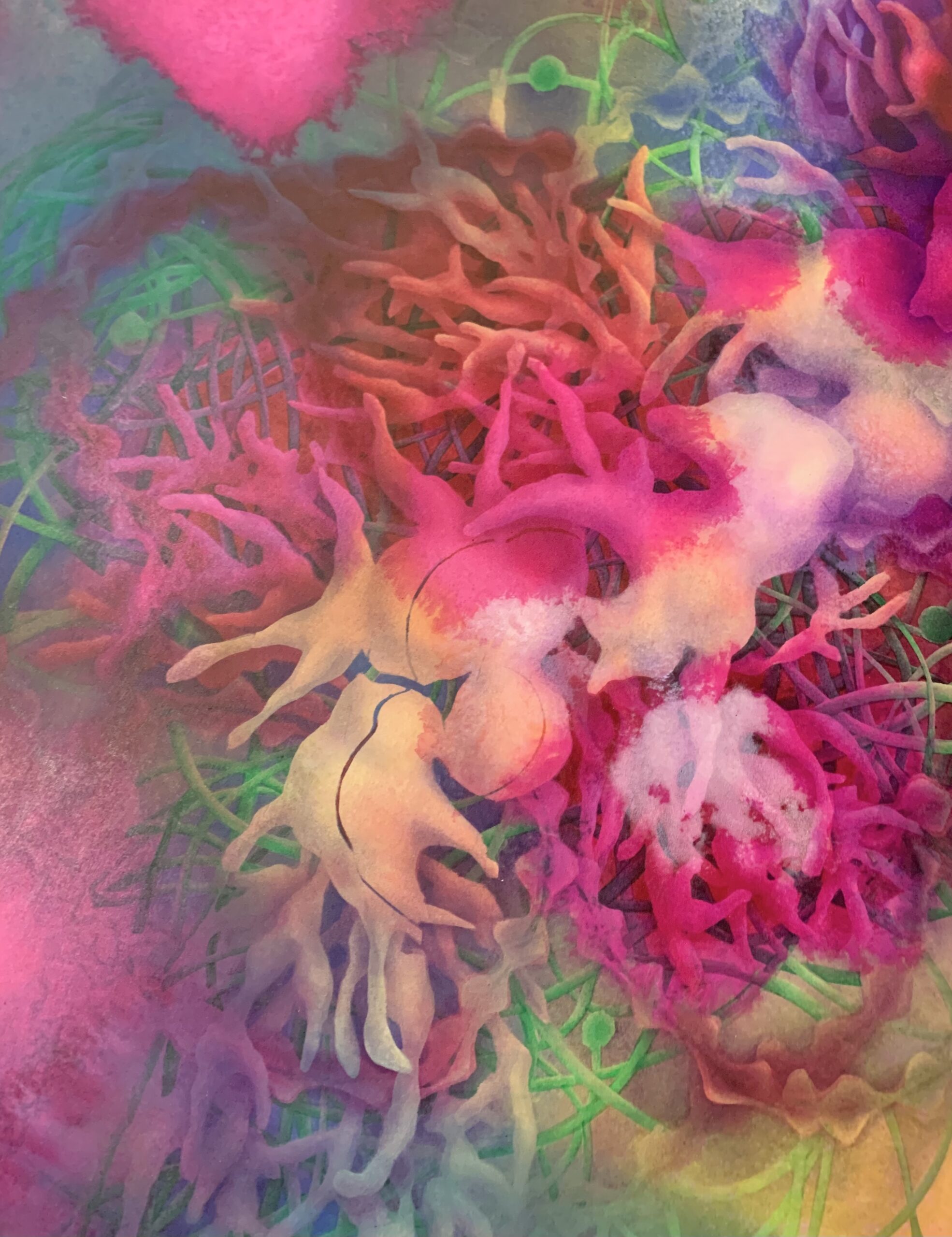Process: Six Layers, Jonghoon Im
2024
Der Arbeitsprozess beginnt damit, dass auf nassem Papier Farben laufen gelassen werden, damit sie sich halbautomatisch mischen (1. Schritt). Nach dem Trocknen der Farben wird Masking Tape verwendet, um die Form zu planen, die auf die Farben aufgetragen werden soll. Anschließend werden die Formen mit einem Schablonenpinsel beschrieben (2. Schritt). Sobald die geplanten Formen abgeschlossen sind, wird das Bild erneut mit Wasser befeuchtet, und die Schritte 1 und 2 werden abwechselnd wiederholt, um Schichten aufzubauen. In diesem Prozess werden die ursprünglich beabsichtigten Formen überdeckt und modifiziert, und durch das Schichten entsteht eine visuelle Tiefe im Bild.
The working process begins by letting colors flow on wet paper so that they mix partially automatically (Step 1). After the colors have dried, masking tape is used to plan the shape that will be applied to the colors. Then, the shapes are described with a stencil brush (Step 2). Once the planned shapes are completed, the image is moistened again with water, and steps 1 and 2 are alternately repeated to build up layers. In this process, the originally intended shapes are covered and modified, and through the layering, a visual depth is created in the image.
작업 프로세스는 젖은 종이 위에 색을 흘려놓아 색이 반자동적으로 혼합되도록 만드는 것부터 시작된다 (1단계). 색이 건조된 후에는 마스킹 테이프를 사용해 색 위에 올라갈 형태를 계획하고, 스텐실 붓을 두드리면서 형태를 묘사한다 (2단계). 계획된 형태가 완성되면, 그림을 다시 물로 적셔서 1단계와 2단계를 번갈아 가며 반복하여 레이어를 쌓는다. 이 과정에서 처음에 의도했던 형태는 덮어지거나 변형되며, 레이어가 쌓이면서 그림에 시각적인 깊이가 형성된다.
